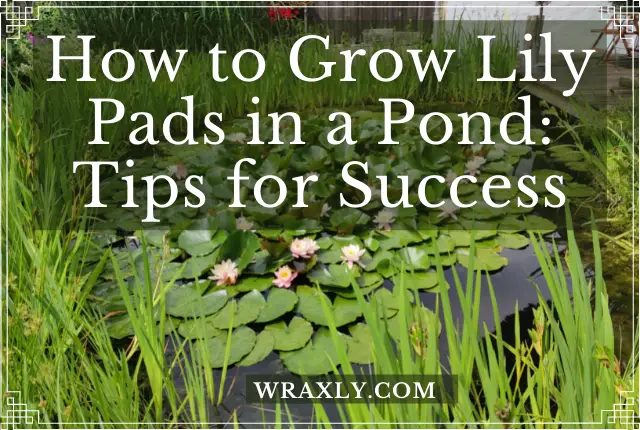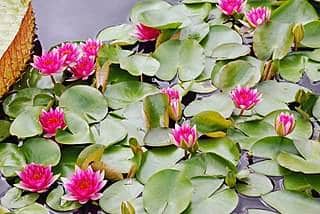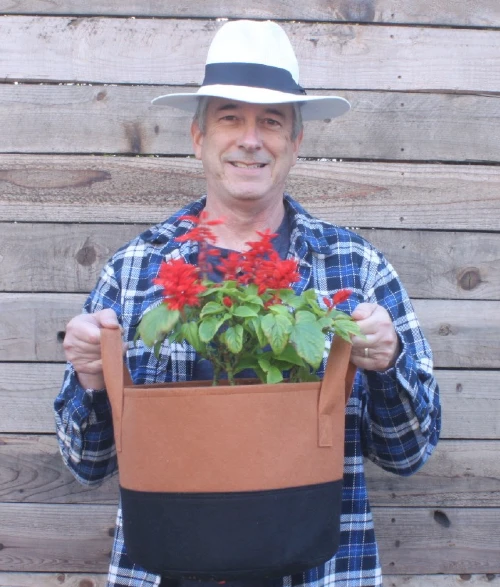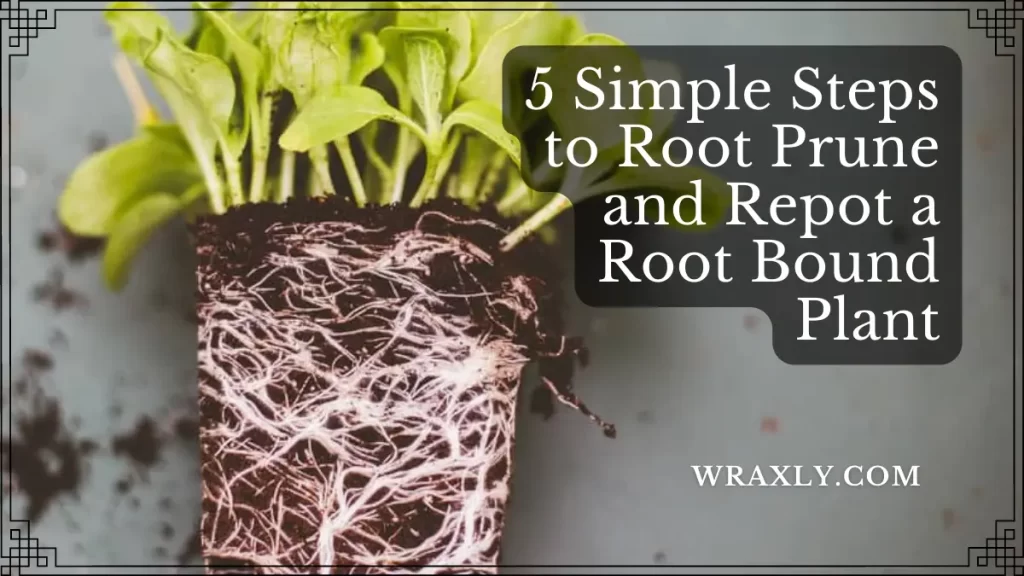Do you have a pond in your backyard? If so, you may be wondering how to grow lily pads in it. Lily pads are beautiful plants that can add a lot of character to your pond. They can also provide shade and shelter for fish and other aquatic creatures. In this blog post, we will discuss some tips for growing lily pads in a pond successfully.

Table of contents
- What Are Lily Pads?
- How to Grow Lily Pads in a Garden Pond
- Which Species are Best for North American Ponds?
- When Should Water Lily Pads Be Planted?
- Where to Plant Water Lilies?
- How to Use a Plant Basket to Grow Water Lilies
- Care and Maintenance of Water Lilies
- Recommended Water Lily Fertilizer
- How to Winterize Water Lilies
- FAQs About Lily Pads and Water Lilies
- Final Thoughts on How to Grow Lily Pads
What Are Lily Pads?
Lily pads are the floating leaves of aquatic plants that belong to the genus Nymphaea, commonly called water lilies (waterlilies in the UK). The undersides of lily pads are often brightly colored and attract a variety of insects, which the plant then traps and consumes.
Lily pads come in a range of sizes, from less than an inch to over a foot in diameter. Some species of water lilies are also fragrant, and their flowers can be used to make perfumes and potpourris. Lily pads are found in stagnant or slow-moving water bodies all over the world, and they play an important role in maintaining the health of these ecosystems. In addition to providing food for insects and other animals, lily pads help to oxygenate the water and provide shelter for fish and tadpoles.
How to Grow Lily Pads in a Garden Pond
Now that you know a little bit about lily pads, let’s discuss how to grow them in a pond.
Growing water lilies in a pond is relatively easy and can add a splash of color to your water feature. Water lilies are available in a variety of colors, including white, pink, and yellow. While they can be purchased at most garden centers, they can also be propagated from bulbs.
To grow water lilies from bulbs, simply place the bulbs in a container of water and place it in a sunny spot. Within a few weeks, you should see new leaves emerging. Once the leaves have reached a few inches in length, you can then transplant them into your pond. Water lilies prefer slow-moving or stagnant waters, so be sure to plant them away from any areas of high turbulence.

Which Species are Best for North American Ponds?
Since lily pads come from water lilies, let’s talk about which water lily varieties are better suited to growing in North America than others.
The hardy water lily (NYMPHAEA ‘Andreana’), for example, is a type of water lily that is native to North America and can tolerate colder temperatures than many other varieties. As a result, it is a good choice for gardeners who live in cooler climates.
Another good option for North American gardeners is the Egyptian water lily (NYMPHAEA ‘caerulea’), which is tolerant of hot summer temperatures and prefers full sun.
Whichever type of water lily you choose, be sure to select a variety that is appropriate for the climate in your area.
Recommended Water Lily Starters
| Image | Title | Prime | Buy |
|---|---|---|---|
 | Live Water Lilies Rhizomes (Tubers) | (Top 4 IWGS Award) Pre-Grown Hardy Lilies in White, Red, Yellow, Pink (Yellow) | Prime | Check Price on Amazon |
 | Chalily Live Aquatic Hardy Water Lily | Pre-Grown, Pre-Rooted, Hardy Water Lily for Your Pond or Patio Water Garden | Drop-N-Grow Convenience - Pink | Prime | Check Price on Amazon |
Top | Water Lily Bundle (Top 4 IWGS Award) - 4 Pre-Grown Hardy Lilies Rhizomes in Purple, Red, Yellow, Orange from AquaLeaf Aquatics | Prime | Check Price on Amazon |
 | Pre-Grown Hardy Water Lily Tuber (Top 4 IWGS Award) Aquatic Pond Plant Garden Assorted Free Fertilizer Supplies | Prime | Check Price on Amazon |
 | Planterest - Nymphaea King Blue Hardy Water Lily Rhizome Live Aquarium Plant BUY2GET1FREE … | Prime | Check Price on Amazon |
 | (Nymphaea Alin) Tropical Water Lily Tuber Live Aquatic Plants for Freshwater Fish Pets Pond Balcony Decorations by Greenpro | Prime | Check Price on Amazon |
 | Planterest - Water Lily Tuber 4 Pre-Grown Hardy Lily Rhizome Live Aquarium Plant | Prime | Check Price on Amazon |
When Should Water Lily Pads Be Planted?
Lily pads are a popular choice for gardens and ponds, but many people are unsure of when to plant them. In general, it is best to wait until late spring or early summer. The warmer weather will help the roots to establish themselves quickly. However, if you live in an area with mild winters, you can plant lily pads as early as February.
When choosing a planting date, keep in mind that lily pads need at least six hours of sunlight per day. They also prefer warm temperatures, so avoid planting them when the weather is still cold. With a little care and attention, lily pads will thrive in any garden or pond.
Where to Plant Water Lilies?
Water lilies are relatively easy to grow, but there are a few things to keep in mind when choosing a location for them.
First, consider the size of the pond or water garden. Large to medium water lilies should be planted at a depth of 18″ – 30″. Smaller varieties can go anywhere between 12-24″, while dwarves prefer a depth range of 6 inches up to 1 foot in depth.
Second, make sure the location gets plenty of sunlight. Water lilies need six to eight hours of sunlight each day to produce healthy growth and abundant flowers.
Finally, choose a location with soft, sandy soil. This will help ensure that the roots can take hold and the plant will be able to spread.
How to Use a Plant Basket to Grow Water Lilies
A plant basket is a great way to grow water lilies. Simply place the basket in a pond or other body of water, fill it with soil, and plant your lily. The roots will quickly take hold and the plant will begin to grow.
Water lilies are typically heavy feeders, so be sure to provide them with plenty of nutrients. As the lily grows, it will spread its roots and eventually fill the entire basket. At this point, you can either leave it as is or transplant it to a larger container. Whichever way you choose to grow your water lily, a plant basket is a great way to get started.
Recommended Water Lily Baskets
| Image | Title | Prime | Buy |
|---|---|---|---|
 | TotalPond Aquatic Plant Basket, 10-inch | PrimeEligible | Check Price on Amazon |
Top | Aquascape Aquatic Lily Plant Pots for Pond and Water Garden, 14-inch x 7-inch, Black, 2-Pack | 98929 | PrimeEligible | Check Price on Amazon |
 | Cobalt Aquatics Square Planter Basket | PrimeEligible | Check Price on Amazon |
 | Square Koi Pond Plastic Mesh Plant Basket 13 Inch (34cm), for Large Aquatic Pond Plants, Plastic Water Garden Plant Pots for Aquaponics, Hydroponics Slotted Mesh | Prime | Check Price on Amazon |
 | Aquascape Fabric Plant Pot for Pond and Aquatic Plants, Versatile, Durable, 6-inches x 6 Inches, 2-Pack | 98501 | Prime | Check Price on Amazon |
 | 5" Round Water Garden Pond Aquatic Plastic Mesh Slotted Plant Basket X 3 Pack, Pond H2o Plastic Water Garden Planting Basket Aquaponics, Hydroponics Slotted Mesh | Prime | Check Price on Amazon |
 | Beckett Aquatic Plant Accessories Aquatic Plant Baskets Model PBS1010 | PrimeEligible | Check Price on Amazon |
Care and Maintenance of Water Lilies
Water lilies are one of the most popular aquatic plants, and it’s easy to see why. Their large, brightly-colored flowers add a touch of beauty to any pond, and their foliage provides essential shade and shelter for fish. However, water lilies are not without their challenges. These delicate plants require careful care and attention to thrive. Here are a few tips for keeping your water lilies healthy and happy:
- Place water lilies in a sunny spot in your pond. They will need at least six hours of sunlight each day to bloom.
- The water should be fairly shallow – no more than 18 – 30 inches deep.
- Water lilies prefer slow-moving or stagnant waters.
- Water lilies should be fertilized once a month with a high-phosphorus aquatic plant fertilizer.
By following these simple guidelines, you can enjoy the beauty of water lilies and lily pads for many years to come.
Recommended Water Lily Fertilizer
| Image | Title | Prime | Buy |
|---|---|---|---|
 | Chalily Aquatic Plant Fertilizer for Water Lily and Lotus | Great for Use in a Pond & Aquarium | Perfect Plant Food (60 Count) | PrimeEligible | Check Price on Amazon |
 | CrystalClear Thrive - 10-14-8 Aquatic Plant Fertilizer - 60 Tablets | PrimeEligible | Check Price on Amazon |
Top | API (3 Pack) Pond Care Aquatic Plant Food, 25 Tablets Each | PrimeEligible | Check Price on Amazon |
 | Laguna Once-A-Year Mini Fertilizer Spike, Aquatic Plant - 6-Pack | Prime | Check Price on Amazon |
 | MKTROD Aquatic Plant Fertilizer Lotus Lily Water Tablet Food Aquatic Pond Plant Fertilizer Boosts Growth Color | PrimeEligible | Check Price on Amazon |
 | Winchester Gardens 12 Count Highland Rim Aquatic Fertilizer Bag | Prime | Check Price on Amazon |
 | Plantabbs Landon Aquatics Fertilizer 12-20-8 | PrimeEligible | Check Price on Amazon |
How to Winterize Water Lilies
As the weather starts to cool down, you’ll need to take some steps to winterize your water lilies. Water lilies are tropical plants, so they won’t survive if left in cold water. The first thing you’ll need to do is bring your plants inside. If you have an outdoor pond, transfer the plants to a large indoor container filled with fresh water. You’ll also need to remove any dying leaves or flowers.
Once your plants are indoors, lower the water level so that the crown of the plant is just above the waterline. This will help prevent the roots from rotting over the winter.
Finally, make sure to give your plants plenty of light. Water lilies need at least six hours of sunlight each day, so place them near a sunny window. With a little care, your water lilies will survive the winter and be ready to bloom again in the spring.
FURTHER READING
- Choosing the Best Water Plants for Ponds
- Water Lily vs. Lotus – What’s the Difference?
- A Simple DIY Method to Create a Backyard Koi Pond
- 13 Beautiful Backyard Pond Ideas [with Pictures!]
FAQs About Lily Pads and Water Lilies
To harvest lily pads, cut the stem just below the leaf with a sharp knife. Make sure to leave at least two leaves on the plant so it can continue to photosynthesize.
A high-phosphorus fertilizer is best for water lilies. This type of fertilizer can be found at most garden centers.
To plant lily seeds, fill a seed tray with fresh potting mix. Place the seeds on the surface of the soil and lightly press them down. Water the seeds and place the tray in a warm, sunny location. The seeds should germinate within two weeks.
Water lilies should be transplanted in the spring before they start to bloom. Transplanting during this time will minimize stress on the plant and help it to recover more quickly.
Yes, water lilies can be grown indoors. They require at least six hours of sunlight each day and should be placed in a large container filled with fresh water. The water level should be lowered so that the crown of the plant is just above the waterline.
To encourage blooming, water lilies should be fertilized with a high-phosphorus fertilizer. They also require at least six hours of sunlight each day. If the plants are not blooming, they may be too cold or too shaded.
Water lilies typically take about two weeks to germinate. Once they have germinated, they will begin to grow rapidly. Full-grown water lilies can reach up to six feet in diameter.
Water lilies grow best in water that is between 60 and 70 degrees Fahrenheit.
Lily pads can spread quickly if they are not kept in check. They can spread by producing offsets, or by producing seeds that float away and take root elsewhere.
Final Thoughts on How to Grow Lily Pads
If you’re looking to add a splash of color and elegance to your pond, water lilies are a great option. And, if you want to make sure your lilies have the best chance for success, keep the following tips in mind. Hardy water lilies do well in North America, so if you happen to be in this geographical area, be sure to choose those when planting. Planting should take place in late spring or early summer – making sure they get at least 6 hours of sunlight each day. Follow these simple tips, and you’ll be enjoying beautiful water lily pads all season long!

Darrell has a passion for gardening that he inherited from his father. Go here to read more about the influence his father played in his love for gardening. If you want to send Darrell a quick message, then visit his contact page here.

![How to Water Indoor Plants [Plant Care 101]](https://wraxly.com/wp-content/uploads/2021/03/How-to-Water-Indoor-Plants-Plant-Care-101-1200-1024x576.webp)

![Growing Plants from Cuttings [A Simple Guide]](https://wraxly.com/wp-content/uploads/2021/03/Growing-Plants-from-Cuttings-A-Simple-Guide-1200-1024x576.webp)